Why Children are Never Too Young For Therapy


It’s important to recognize that therapy doesn’t have an age limit.
While the idea of children undergoing therapy may raise eyebrows for some, the truth is that addressing mental and emotional well-being from a young age can be a transformative and empowering experience.
Early Intervention = Lasting Results
Just as we prioritize regular check-ups for physical health, the same principle applies to mental health.
Early intervention allows therapists to identify and address potential issues before they become more deeply rooted. By working through challenges early on, children can develop healthy coping mechanisms that will serve them well into adulthood.
Building Emotional Resilience
Childhood is a time of rapid emotional development.
Therapy provides children with a safe and nurturing environment to explore and understand their emotions. Learning to navigate feelings such as anxiety, sadness, or anger with the guidance of a trained professional equips children with the emotional resilience needed to face future challenges.
Navigating Life Transitions
Children, like adults, experience various life transitions—whether it’s moving to a new school, the birth of a new sibling, or parents that are divorcing. Therapy can be instrumental in helping children navigate these changes, providing them with tools to adapt and grow in the face of uncertainty.
Fostering Healthy Communication Skills
Effective communication is a pillar of healthy relationships.
Therapy offers a space where children can express themselves freely and learn how to articulate their thoughts and feelings. Developing strong communication skills early on sets the stage for better interpersonal relationships in the future.
Addressing Behavioral Concerns
Some children may exhibit behavioral issues that can be challenging for parents and educators to understand and manage.
Therapy can uncover the underlying causes of such behaviors and offer strategies to address them constructively. It’s important to view behavioral challenges as growth opportunities rather than indicators of a child being “too young” for therapy.
Supporting Parents and Caregivers
Therapy isn’t just for the child; it’s also a resource for parents and caregivers. Professionals can offer guidance on effective parenting strategies, help manage expectations, and support the entire family unit.
Creating a Stigma-Free Environment
Normalizing therapy from a young age helps break down the stigma associated with seeking mental health support. When children grow up understanding the value of emotional well-being, they are more likely to continue prioritizing their mental health as they enter adolescence and adulthood.
The 5 Benefits to Family Therapy


A healthy decision to make as a family is the decision to embark on the journey of family therapy. Family therapy can help your family to understand and appreciate each other better.
Here are five benefits that family therapy can offer.
Improved and Effective Communication
Family therapy provides a structured and supportive environment for family members to express their thoughts and feelings.
One of the biggest foundations in all relationships is having good communication. In a family that is struggling, a therapist can help identify communication patterns, improve listening skills, and facilitate healthier ways for family members to interact with each other.
This enhanced communication can lead to better understanding and empathy among family members, which will make everyone happier.
Conflict Resolution
Families often face conflicts and disagreements.
In family therapy, these conflicts are addressed and resolved by identifying their underlying causes. A therapist can guide the family in finding constructive ways to manage and resolve conflicts, fostering a more harmonious and supportive family dynamic.
Enhanced Problem-Solving Skills
Family therapy equips family members with problem-solving strategies and coping mechanisms.
Families can develop effective problem-solving skills that extend beyond the therapy sessions by working together to identify and address challenges. This can lead to a more resilient and adaptable family unit.
To Understand and Be Understood
Being understood is one of the greatest feelings. Attending family therapy encourages a deeper understanding of each family member’s perspective, experiences, and needs.
This understanding can reduce misconceptions and promote empathy within the family. By exploring individual and collective experiences, families can develop a greater appreciation for each other’s uniqueness and strengths.
Building Stronger Relationships
Family therapy aims to strengthen family bonds and relationships.
Family members can develop a sense of connection and unity by fostering a supportive environment. Through therapy, families can work on rebuilding trust, improving intimacy, and creating a foundation for healthier relationships.
Benefit from Family Therapy Today
It’s important to note that the benefits of family therapy can vary depending on the specific issues being addressed and the commitment of family members to the therapeutic process. People have to want to change—this cannot be forced.
Additionally, the skills and insights gained in family therapy can extend beyond the family unit. This can have a positive impact on individual well-being and relationships outside the family.
For more information about family therapy or questions, contact the experienced therapists at Psychological Preventative Health today!
5 Tips For Couples Going Into Therapy


Relationships are hard.
A healthy marriage is a lot of work; sometimes, you need some help. If you are working to create a healthy relationship with your partner, the following tips will help you achieve better results.
Tip: Be Yourself
Many people feel pressured to hide flaws or pretend to be the perfect partner.
It can be frightening to share your thoughts and feelings in therapy, but this is essential to any healthy relationship. Hiding your true self to your partner may seem like a good idea initially because you want them to see an “ideal” version of you, but it can damage your long-term relationship.
Being true to yourself will help you build intimacy and create a deeper connection.
Tip: Be Honest
In marriage therapy, don’t lie to the therapist.
You might feel tempted to lie in therapy to avoid embarrassment or to prevent hurt feelings. However, even the best couples therapy techniques may not help if you aren’t honest.
Avoid these impulses by expressing your true feelings—even when difficult. The truth may be difficult to hear, but it is the only way to determine what you and your partner need to work on.
Tip: Share Your Goals
Before getting too deep into therapy, you and your partner should discuss your relationship goals. These goals can help you to stay on track, monitor your progress, and help you both to stay on the same page.
Some common goals to have are:
- Improved ways of communication
- Healthier ways to resolve conflict
- Finding the root causes of conflict
Tip: Active Listening
You should not only share your feelings and thoughts but also take the time to explain them.
After you explain yourself, make sure to actively listen to your partner when they are ready to express their point of view. It’s easy to get defensive; however, try understanding your partner’s perspective. Research consistently shows that active listening can greatly improve relationships.
You can show interest in what your partner has to say by being engaged in what they say. For example, nod along to statements or stare at them as they speak.
Tip: Ask Questions
Along with listening, ask questions. Asking the right questions can help you understand what your partner says or where they are coming from.
When asking questions, wait until your spouse is done talking first. This way, it shows that you care and validate their emotions. It also shows that you’re interested in learning more about them.
How Does Trauma Affect The Brain?
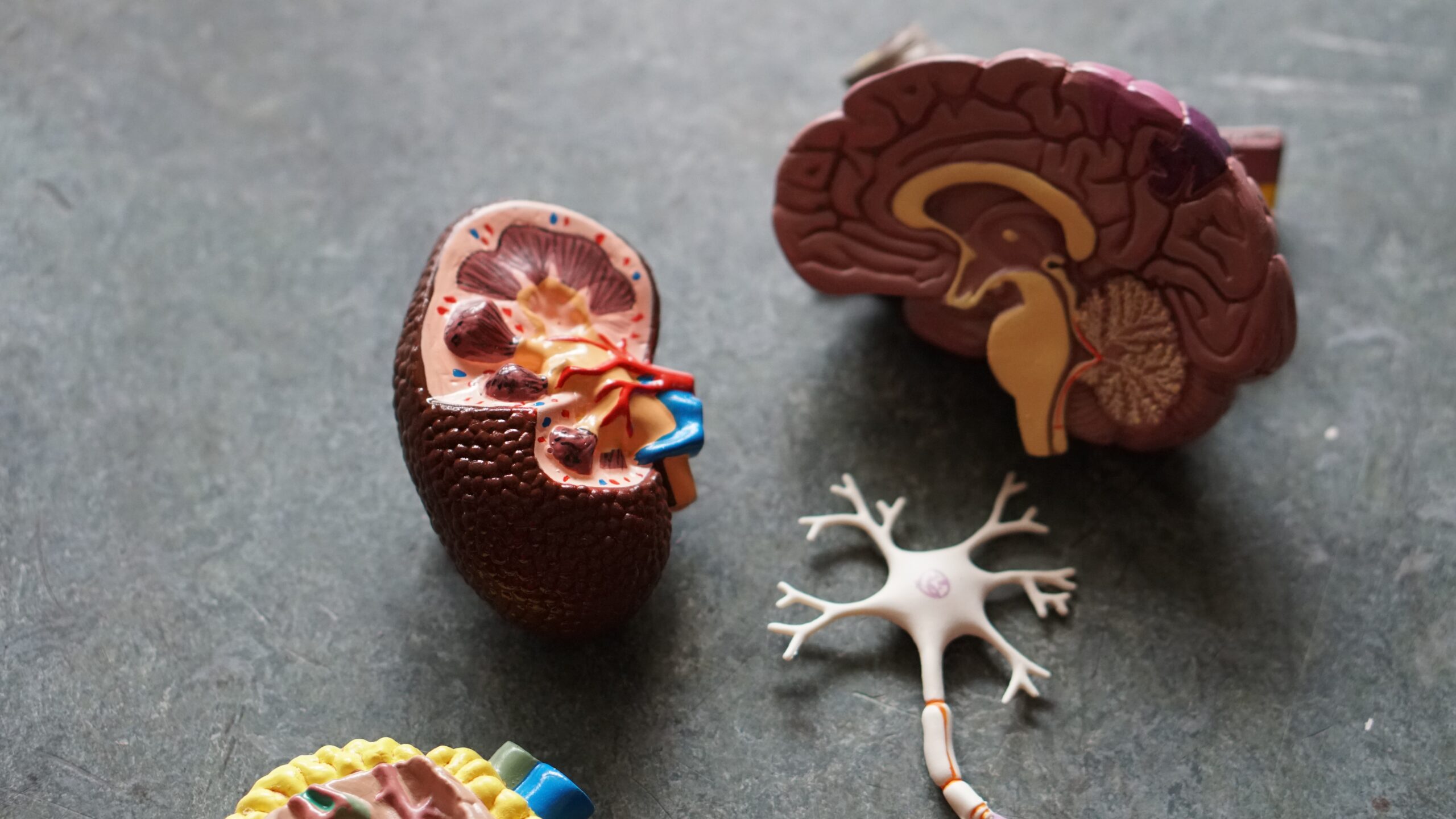
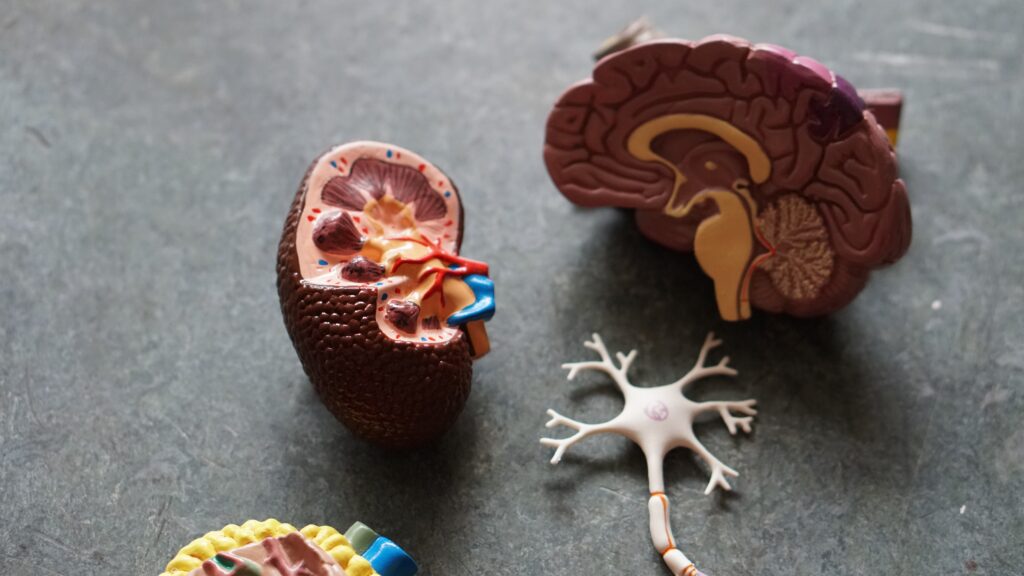
Trauma can have a profound impact on the brain, affecting both its structure and function. When an individual experiences trauma, their brain’s response mechanisms can significantly alter. This often results in heightened stress responses, with the amygdala becoming overactive, leading to increased anxiety and hypervigilance.
What is Trauma?
Trauma is an emotional response to something that has happened—like physical, emotional, or life-threatening harm.
It’s normal for most people to experience trauma; however, the main difference for people with trauma-related mental health problems is difficulty moving on with their lives.
Trauma knows no bounds—whether it is age, gender, or socioeconomic status. And as common as trauma is, many don’t realize how much it truly affects you from the inside out.
How Trauma Changes The Brain’s Chemistry
For the mind and body to function properly, the different parts of the brain need the ability to communicate. However, when a part of the brain changes due to trauma, it becomes a catalyst for other problems to arise.
The hippocampus, a critical memory and emotional regulation region, can shrink in response to chronic stress and trauma. This can impair memory formation and make it more challenging to process and cope with the emotions associated with the traumatic event.
Also, the prefrontal cortex, responsible for decision-making and impulse control, can be affected by trauma. This can result in difficulties in regulating emotions and making rational choices. Additionally, some individuals may develop dissociative symptoms, where their sense of self becomes disconnected from their surroundings, impacting brain regions related to self-awareness and perception.
Furthermore, neurotransmitter balance can be disrupted—affecting mood regulation and reward processing. These alterations contribute to symptoms of depression, anxiety, and other mood disorders. Trauma may also heighten sensory processing, increasing sensitivity and flashbacks triggered by sensory cues.
In severe trauma cases, PTSD can lead to specific brain function and structure changes. Disruptions in brain networks, such as the default mode network, may result in intrusive thoughts and a persistent sense of danger. Connectivity between brain regions involved in emotional processing and memory can also become disrupted.
Some trauma survivors may experience distortions in their perception of time, feeling as though the traumatic event is continually happening or struggling to organize past and present experiences.
The Impact of Trauma
It’s important to remember that not everyone who experiences trauma will develop lasting brain changes or mental health conditions.
Resilience, social support, and timely intervention can mitigate the long-term impact of trauma on the brain, and therapeutic approaches like cognitive-behavioral therapy (CBT), eye movement desensitization and reprocessing (EMDR), and medication can help individuals cope with and recover from trauma-related brain changes and associated psychological symptoms.
If you or someone you know has experienced trauma and needs trauma therapy, contact the professionals at Psychological Preventative Health today.
Does Medicare Cover Mental Health Services?


Often, individuals will opt out of mental health services because of money. They think that they cannot afford it. However, there are different ways you can afford the care you need. Medicare covers many of the costs for various mental health care services. This can be outpatient and inpatient at a general or psychiatric hospital. Medicare is a great option; however, it’s important to be aware that these benefits are subject to limitations—such as copayments, coinsurance, and lifetime maximums.
Medicare Coverage
Medicare provides coverage for both inpatient and outpatient mental health care. Additionally, Medicare prescription drug plans include coverage for medications used to treat mental health conditions. It’s important to review the formulary to ensure that the specific brands and dosages you require are covered.
Medicare Part B
Under Medicare Part B, outpatient mental health care is covered and includes a range of services such as:
- Individual and group therapy
- Treatment for substance use disorders
- Diagnostic tests to ensure appropriate care
- Occupational therapy
- Activity therapies like art, dance, or music therapy
- Training and education related to your condition
- Family counseling as part of your treatment
- Laboratory tests
- Prescription drugs that necessitate administration by a medical professional, like injections
- An annual depression screening
Before beginning services, confirm with your healthcare provider whether they accept Medicare insurance. Providers who don’t accept Medicare might require you to bear the full cost of care.
Medicare Part A
Medicare Part A encompasses inpatient mental health care coverage, whether in a psychiatric hospital or a general hospital.
Your healthcare provider determines the appropriate hospital setting. If care is provided in a psychiatric hospital setting, Medicare covers up to 190 days of inpatient care over your lifetime. If you’ve used up your lifetime days but require further mental health care, Medicare may cover care received in a general hospital.
Medicare Part D
Medicare Part D covers most prescription drugs used to treat mental health conditions.
Your Part D coverage might be through a Medicare Advantage Plan or a stand-alone Part D plan. All Part D plans are required to provide coverage for at least two drugs from most drug categories and all drugs within specific categories, including antidepressants and antipsychotic medications.
Providing Medicare Covered Therapy
Here at PPH, we have a number of different licensed professionals who offer Medicare covered therapy sessions. Contact us today to learn more about our services and treatment options!
The Diversity Amongst Back-To-School Students


Types of Students
1. Kids and teens who are excited and ready for school – these friends come together in this grouping for many reasons. These friends are ready to learn and really enjoy the process of learning. These friends are the kids ready to be out of their homes to hang out with friends more. These are also the kids ready to be away from their home because home is unsafe, unstable, and unpredictable. When you come across these kids don’t doubt their sincerity and don’t downplay their excitement. Welcome their energy to the classroom.
Final Thoughts
8 Effective Tips for Adolescent Therapy


Adolescence is a whirlwind phase in life characterized by rapid physical, emotional, and psychological changes. It’s a time of self-discovery, identity formation, and establishing one’s place in the world. However, it can also be a challenging period marked by uncertainty, peer pressure, and roller coaster emotions.
As parents, caregivers, and mental health professionals, supporting adolescents through this critical stage is essential to their overall well-being.
1. Establish a Safe and Trusting Environment
First of all, at PPH Therapy we create a safe space for adolescents to express themselves openly without fear of judgment.
Therapy sessions are welcoming, confidential, and non-critical. Adolescents often feel vulnerable during this time, so building trust with our therapist is essential to the success of therapy.
Additionally, as parents, your teens should be able to come to you for anything. Create an open, accepting environment; allow them to be free to say whatever they want without lectures or reprimands.
2. Focus on Active Listening
Listening actively and empathetically is a cornerstone of effective adolescent therapy.
Please allow them to voice their concerns, fears, and dreams, and refrain from interrupting or imposing adult perspectives. By truly hearing their experiences, you can gain insights into their inner world and develop appropriate interventions.
3. Validate Their Emotions
Adolescents experience many emotions, and validating what they’re going through is essential. Even if their emotions seem irrational, acknowledging their feelings as real and significant fosters a sense of self-worth. They’ll feel seen and understood.
4. Encourage Self-Expression
Not all adolescents are comfortable expressing themselves verbally.
Therefore, be open to alternative forms of expression, such as art therapy, music therapy, or writing. Engaging in these creative outlets can help adolescents process their emotions and experiences in a non-threatening manner.
5. Address Identity and Self-Esteem Issues
Adolescence is a time when young individuals seek to define their identity and sense of self. Therapy can be a safe place to explore questions of identity, self-esteem, and self-worth. Encourage adolescents to discover their strengths and values while gently challenging negative self-perceptions.
6. Address Peer Relationships and Social Challenges
Peer relationships play a significant role in an adolescent’s life, often bringing joy and stress. Discussing friendship dynamics, conflict resolution, and social challenges can help adolescents develop healthier relationship patterns and coping strategies.
7. Cultivate Resilience and Coping Skills
Helping adolescents build resilience and effective coping mechanisms is vital. Teach them how to deal with stress, setbacks, and disappointments constructively. This will empower them to face life’s challenges more confidently.
8. Normalize Seeking Help
Many adolescents may hesitate to seek therapy, fearing it makes them “different” or “weak.” So, normalize the idea of seeking help for mental health, just as they would for physical health. Emphasize that therapy is a tool for personal growth, not a sign of weakness.
6 Reasons To Go To Couples Therapy


Maintaining a healthy and fulfilling relationship requires effort, communication, and understanding. However, even the strongest partnerships encounter challenges and conflicts that can strain the bond between partners.
When difficulties arise, seeking professional help through couples therapy can provide invaluable guidance and support. If you and your partner are considering therapy, here are six reasons to inspire you.
1. Enhancing Communication and Conflict Resolution Skills
One of the fundamental pillars of a successful relationship is effective communication.
Couples therapy offers a safe and neutral environment where couples can learn and practice healthier ways to express their needs, concerns, and emotions. Therapists provide invaluable tools and techniques to improve communication skills, such as active listening, assertiveness, and empathy.
In this space, couples can reduce misunderstandings, resolve conflicts, and deepen their connection by learning to communicate more effectively.
2. Gaining a Deeper Understanding of Each Other
One of the best things about couples therapy is that it facilitates a deeper understanding of one another’s thoughts, feelings, and perspectives.
Skilled therapists guide couples through conversations that uncover underlying issues, past traumas, and unmet needs. This increased awareness fosters empathy, compassion, and a greater appreciation for each other’s experiences. By gaining insight into their partner’s inner world, couples can strengthen their emotional connection and build a more solid foundation for their relationship.
3. Strengthening Relationship Bonds
Relationships evolve, which means couples need to nurture their bond continuously.
In couples therapy, partners can rediscover what initially drew them together and reignite the spark that may have diminished over time. Therapists guide couples in developing shared goals, interests, and values, fostering a sense of partnership and teamwork. Couples can build a resilient and enduring connection by investing in their relationship through therapy.
4. Resolving Long-standing Issues
Unresolved issues and resentments can create a significant strain on a relationship.
Couples therapy provides a structured and supportive environment for addressing these long-standing concerns. Therapists assist couples in identifying the root causes of conflicts and guiding them toward effective resolution. This process promotes forgiveness, healing, and a sense of closure, allowing couples to move forward with a renewed sense of harmony.
5. Strengthening Emotional and Mental Well-being
Relationship difficulties can take a toll on individuals’ emotional and mental well-being.
Couples therapy focuses on the relationship itself and offers support for individual growth. Therapists help partners develop self-awareness, self-esteem, and coping strategies to manage stress and emotional challenges. As individuals experience personal growth, they bring a healthier and more balanced self to the relationship, benefiting both partners.
6. Preventing Future Issues
Couples therapy is not solely reserved for relationships in distress; engaging in therapy as a preventative measure can be incredibly beneficial.
In therapy, couples can prevent lingering issues from escalating into significant challenges by addressing minor concerns early on. Additionally, couples therapy equips partners with tools to effectively navigate future conflicts and maintain a healthy relationship in the long term.
34th Annual Boston International Trauma Conference | Part 4


34TH ANNUAL BOSTON INTERNATIONAL TRAUMA CONFERENCE | PART 3
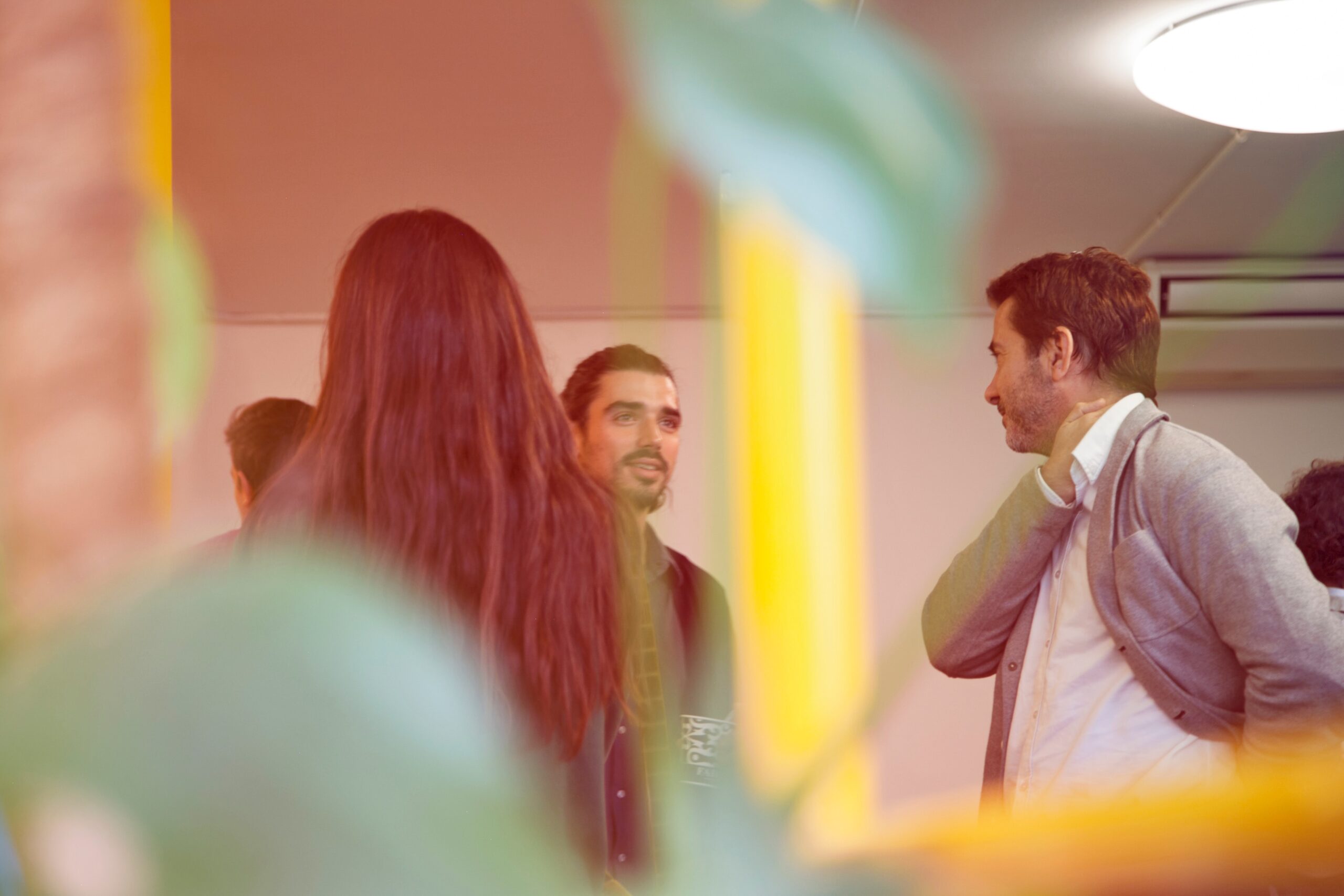

34th Annual Boston International Trauma Conference (https://
34th ANNUAL BOSTON INTERNATIONAL TRAUMA CONFERENCE | Part 2


Come with me for day by day takeaways on the latest and greatest in trauma treatment:
34th Annual Boston International Trauma Conference (https://
1. Conversations about SMART Implementation Across Cultures.
Featuring Elizabeth Warner, Alexandra Cook, Anne Westcott, Heather Finn, Alicia Hu, Mei Ling Hu, Kasey Pendexter, and Mari Kjølseth Braein. (https://
SMART is a form of body focused therapy currently focused on children and teens however there are current projects exploring what this could look like for adults. SMART stands for Sensory Motor Arousal Regulation Therapy.
2. IFS and Addictions.
3. Keynote Talk: Psychological Trauma Underlying Mental Processes.
1. Conversations about SMART Implementation Across Cultures.
2. IFS and Addictions.
I have a love love relationship with IFS (Internal Family Systems). A very, very brief overview of this therapy is that all of us have a core “Self” that is considered: compassionate, curious, creative, confident, calm, clear, courageous, and connected. This “Self” is who we really are underneath different “parts” that developed in almost extreme ways to help us or the “Self” cope with something traumatic or dysfunctional. “Parts” come in three categories and those categories can have multiple different behaviors, attitudes, thoughts that come with them.
There are “exile parts” that are parts of us that have been hurt, traumatized, sad; they are exiled because our system wants to protect us from danger, discomfort, and to keep us safe. There are “manager parts” that rush in the extreme to make sure the exiles never get triggered. An example of a “manager” would be an internal critic – the critic’s job is to make sure we don’t do things that trigger the exile and that voice comes with a lot of shame typically. Then there are “firefighter parts”; these are parts that rush in when an “exile” breaks through a “manager”‘s efforts and will do anything to decrease the emotion, thought, hurt by any means. These means can be addiction, daily behaviors (shopping, distracting, avoiding), self-harm, and suicide. These “firefighters” do anything to keep us safe and safety comes to mean that our exiles don’t feel hurt anymore.
3. Keynote Talk: Psychological Trauma Underlying Mental Processes.
Gabor Mate (https://drgabormate.com) and Richard Schwartz (https://ifs-institute.com/
These two men have created a different way to consider trauma, healing, and the human experience. For me personally they have changed the way I am a therapist and the way that I relate to myself and others.
34th Annual Boston International Trauma Conference | Part 1


Come with me for day by day takeaways on the latest and greatest in trauma treatment:
34th Annual Boston International Trauma Conference (https://traumaresearchfoundation.org)
This year I am attending the conference from the comfort of my living room and home office 🙂 And…it is completely worth it! The conference this year is 4 days of amazing information from researchers and practitioners that continue to create the best treatment options for individuals living with trauma and those of us who work in the trauma field.
Today I attended “From Empathic Distress to Compassion: Building Resilience in the Face of Trauma” with Tania Singer (https://taniasinger.de) and Ronald Siegel (https://drronsiegel.com)
They discussed research that is helping to train peoples’ minds to improve three things:
- attention & mindfulness (through breathing meditations and body scans)
- care & compassion (through loving kindness meditations and dyad exercises)
- cognitive perspective taking & theory of mind (through dyad exercises and observing-thoughts meditations)
A few interesting things they brought up early on is that attention & mindfulness are self oriented skills. Care & compassion are self and other oriented skills (about relating to others and relationships). Cognitive perspective taking is a self and other oriented skill that is called “meta” meaning that you work on thinking about how you and others are thinking.
The main research study here can be found on Tania Singer’s website (https://taniasinger.de) under the menu topic ReSource Project. This study was conducted for at least a year and phases were done in person as well as virtually because part of the study occurred while Germany was in lock down d/t COVID 19. Two things she shared from this study was seeing that the brain actually thickens, grows, and shows improvements in people who were doing the training. The parts that grow play a role in empathy, care and compassion. Second thing – that peoples’ capacity and tolerance for social situations increases.
Now, for those of us living with trauma this may sound great but very overwhelming. When it comes to tools, resources, and healing therapy is still a great way to go. Finding a therapist who will work with you, be patient, listen to you and provide some gentle guidance; all good things. One timeline for healing with improving feeling and sensation in the body as well as ability to name those things was 6-9 months with help.
Okay, cutting this short here because really; this is better learned and done together. Head over to the Meet Our Team tab and see if anyone of us feel like a good fit to help you in healing from trauma and learning to find compassion for yourself.
Come back tomorrow where I will be writing about “How to incorporate Neurofeedback into Trauma Treatment – Latest Developments”; “IFS and Addictions” … and possibly more!
Written by Katie Walter
Common Misconceptions About Seeking Therapy


There was a lot of stigma surrounding topics like mental illness and addiction. Fortunately, nowadays, people are much more open about seeking the help they need.
Here in Ogden and Salt Lake City, therapy can be used to treat many mental conditions, including anxiety, depression, and obsessive-compulsive disorder. But, of course, you don’t have to have any of these specific conditions to seek therapy—anyone can meet with a therapist.
However, therapy can sometimes still get a bad rap. Some people might be too dependent on what they see on television or in fictional books, which causes a distorted view of what therapy is.
Even though a lot of information is available, it can be easy to fall for the misconceptions surrounding therapy.
Only “Crazy” People And Those With Big Problems Go To Therapy
First, “crazy” has many different connotations—sometimes, good ones. Secondly, it’s untrue.
If you are in a crisis, therapy can make a huge difference in your life. But you don’t need to suffer from a severe mental illness to get to therapy. Therapy clients often struggle with the same issues we all deal with daily: relationships, self-doubt and confidence, self-esteem, and work-life stress.
Therapy Is Like Talking To A Friend
It’s easy to see therapy as a conversation with a friend. Because with friends, you can share your feelings. And a good friend can be there for you during stress or emotional distress.
However, therapy is very different from your relationships with family and friends. Your therapist is a trained professional who has learned the most effective evidence-based techniques to assist you in taking control of your mental health.
Also, your therapist will help you manage your emotions and challenge your negative thoughts, behaviors, and patterns. They will teach you how to build good relationships and avoid toxic ones. During your sessions, you’ll learn techniques to calm your emotions and stay grounded.
You Only Need One Session
Sometimes, movies make it seem like one session solves all the problems, but it doesn’t work in real life.
Here at Psychological Preventative Health, most of our sessions are scheduled for 55 minutes. And you can’t learn everything about someone in 55 minutes. Getting to the root of the problem will take many sessions.
Therapy Doesn’t Work
You might think therapy is a joke.
If you’re in a bad or dark place in your life, it can be difficult to imagine not feeling like this. However, therapy works and has made a huge difference in many lives.
Of course, it’s important to remember that therapy is a journey that’s unique to each individual. No two experiences will be the same. Therapy makes the most impact when you meet the right therapist who caters the best treatment for you.
Seek The Help You Need Today
If you want to take control of your life, schedule a session today!
With two convenient Utah locations—Salt Lake City and Ogden—Psychological Preventative Health is here for you. With our team of licensed SelectHeath professionals, you’re in good hands.
Back To School Therapy Tips To Help Transition
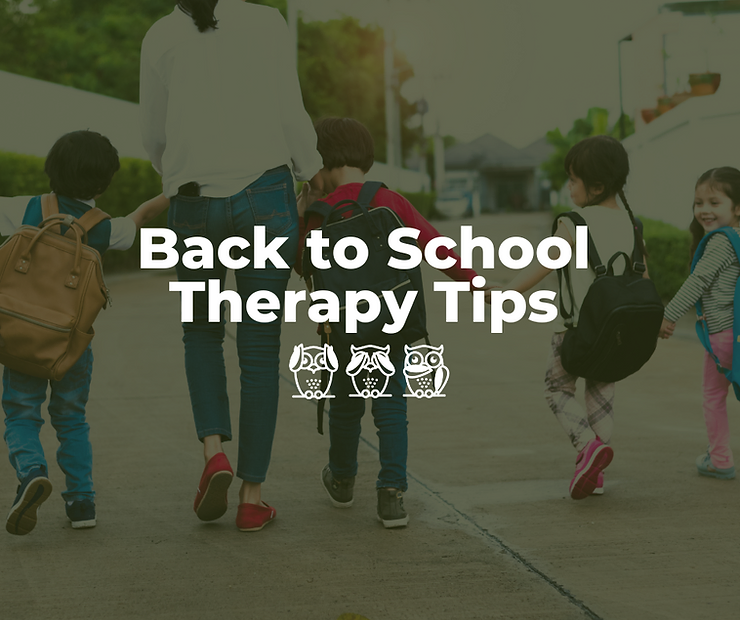

Help Yourself and Your Children Transition Back to School
This is a time of year when there are so many changes for kids, teens, and parents alike. Returning to school brings new and old friends, activities, learning, expectations, and grades. All of that is the added stress of social media, being a kid, family member, and parent.
Okay, writing that started to bring some flashbacks of school…phew! This post is hopefully going to provide ideas, tips, and general direction for kids, teens, and parents to help navigate the coming school year.
Mentally Prepare Yourself and Your Child for The School Year
Going into the school year is a big transition time and everyone involved in this process needs to be on the same page. The ideas to prepare and plan for our life skills, time commitments, education priorities, mental health, and play – giving them chances to be a kid. These things become complicated when expectations are kept silent or one-sided.
Taking time to break each of the above areas down will help parents and caregivers have an idea of how to help their kids and teens.
Priorities to Consider
Life skills examples include planning, organizing, cleaning, communication, boundaries, and responsibility.

Time commitment examples include sitting down together and going through all 168 hours you and your child have in one week. Consider all 24 hours in a day and really help them look at how their time is spent. Look for opportunities to have transition time between school, activities, and homework.
Education priority examples include everyone setting realistic expectations for performance.
Openly discussing learning ability, factors that can impact that, and really having an open min on both sides to accepting limits as well as pushing limits when appropriate.
Mental health is so crucial for kids and teens. The amount of stress, environmental factors, friends, bullies, and social media are all so much to handle. Managing times for breaks; discussing anxiety, suicidal thoughts, depression, and self-harm; support systems; and normalizing conversations and acceptance of these things can open so much in having your kid or teen come to you.
Play examples include time with friends, rest, fun activities, creativity, and using imagination.

With all the things to consider going into a new school year remember that everyone at home is going to have some high emotions during the first 6-8 weeks and then things hopefully will even out.
Keep in mind that home can become a safe place for kids and teens when they know, and trust parents are on their side with their best interests in mind. Invest the time now to be able to create a successful school year for everyone.
CBT, DBT, and ACT? What do these mean? How can they help?
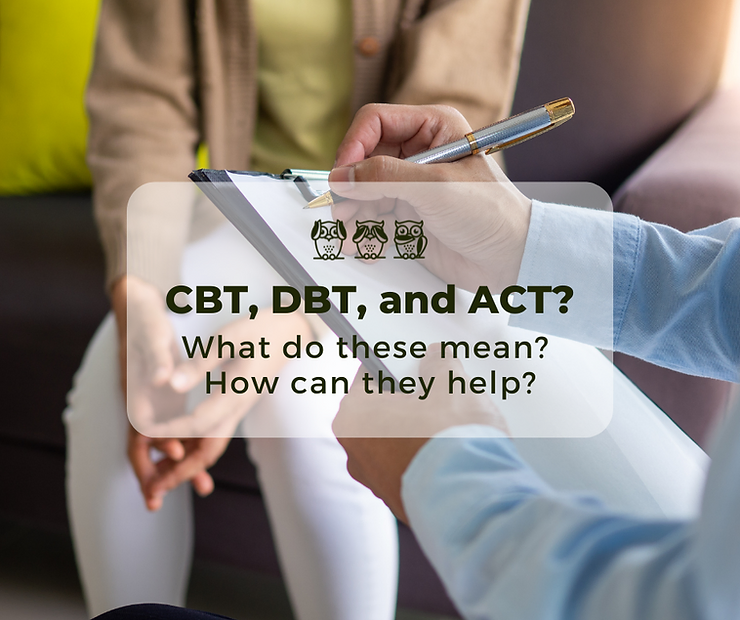

Types of Behavioral Therapy for Mental Health
Here at psychological preventative health, we utilize evidence-based treatments to help you on your wellness journey.
Cognitive Behavioral Therapy (CBT), Dialectical Behavior Therapy (DBT), and Acceptance Commitment Therapy (ACT) are examples of those treatment modalities.
This guide will help break down the main elements of CBT, DBT, and ACT.
What is Cognitive Behavioral Therapy (CBT)
“People’s reactions always make sense once we know what they’re thinking” – Judith Beck
Cognitive Behavioral Therapy (CBT) is a treatment modality commonly used by mental health professionals. The premise behind CBT is the idea that psychological problems, or difficulty in mental wellness, might occur when a person has unhelpful ways of thinking that can lead to unhelpful patterns of behavior. The thoughts that occur may be in our awareness or they can occur subconsciously.
The goal of CBT is to identify negative core beliefs and automatic thoughts that interfere with our ability to function and find peace in everyday life and work towards a more positive self-image.

CBT is an ongoing process, so it does not end when the therapy session is complete. During the session, the client and therapist will work together to come up with ideas to help bring greater insight into the thoughts and feelings of the client throughout the week.
The client might journal, take notes about feelings and thoughts, read relevant books, and practice exercises that have been taught during the therapy session.
Who can benefit from CBT?
Cognitive Therapy has been found to be very effective in treating depression, anxiety disorders, obsessive-compulsive disorder, eating disorders, PTSD, and other mental illness.
What is Dialectical Behavior Therapy (DBT)?
“Emotions are not good, bad, right, or wrong. The first step to changing our relationship to feelings is to be curious about them and the messages they send to us.” – Lane Pederson
Dialectical Behavior Therapy (DBT) is another treatment modality used in psychotherapy in individual or group settings. In DBT, therapists help clients gain greater flexibility in their thinking through skills training.
This is accomplished by synthesizing opposites – and finding a middle ground. So, rather than looking at things as black and white, we can find the grey in between.
Other skills addressed in Dialectical Behavior Therapy (DBT), include acceptance, distress tolerance, and interpersonal skills.
The client and therapist plan together ideas and activities that will work towards their goals.
This might look like completing a diary card daily and reviewing and practicing skills learned.
This also allows the client and therapist to process skills used during the following session.
Who can benefit from DBT?
Dialectical Behavior Therapy (DBT) is helpful for anyone who becomes overwhelmed by intense feelings and emotions and also might engage in unwanted behaviors such as self-harming behavior, rage, anger, impulsive behavior, substance abuse, suicidality, or experiencing a lot of conflict in interpersonal relationships.
This technique is helpful for those suffering from depression, anxiety, PTSD, and especially those diagnosed with personality disorders such as borderline personality disorder.
What is Acceptance Commitment Therapy (ACT)?
“What you resist not only persists, but will grow in size.’’ – Carl Jung
Acceptance Commitment Therapy (ACT – and pronounced as the word act) is yet another psychotherapy modality utilized at Psychological Preventative Health.
Acceptance Commitment Therapy (ACT) works to allow people to move with all aspects of life, both the wonderful and the most difficult parts, by utilizing skills in mindfulness, goal orientation, and acceptance. In this treatment, acceptance is used to counteract avoidance.

While utilizing ACT, the therapist and client work together to identify personal values, goals, and practice re-directing your thoughts and behaviors to move towards your ideal.
A critical element to ACT is the application of skills discussed and practiced in between sessions. This may include journaling, worksheets, and other exercises to enhance the therapeutic learning experience.
Who can benefit from ACT?
ACT has been found to be effective in working with individuals who suffer from addiction, depression, anxiety, personality disorders, and other behaviors that increase difficulty in life.
We’re here to help guide you on your wellness journey
Our caring clinicians at Psychological Preventative Health can help provide thoughtful and gentle guidance through the difficulties of life.
If you have any questions regarding your mental health, please don’t hesitate to reach out to us. We would be more than happy to help you get the care, treatment, resources, and respect that you need and deserve. We look forward to serving you!
Dating 101-Why Doesn’t He Call Me Back?
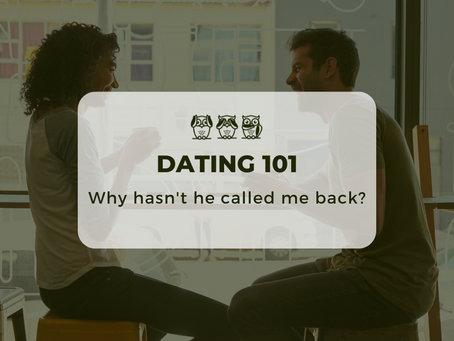

Men are not as complicated as we think they are. And for that matter, neither are women. We
are just different, and while we understand we are different, no one ever really shows us how
much different we truly are. At PPH Therapy we teach you how to understand those unique
differences and how to take advantage of both individuals inherent differences instead of
making our lives more difficult. Biology shows that we are social creatures, we want
companionship and to be with other people. Often, we hear people say “I am fine to be alone, and that’s fine, however “I want to be alone forever”, is rarely stated.
The age-old complaint of men using women for sex and women using men for money is
notorious and can be infuriating to both sides. However, it goes back to biology as well. Men
and women are programmed to meet biological needs. For men, sex ensures their genetics are
passed down. For women, money, aka security ensures that they can take care of their children without having to worry about the necessities such as food, and physical protection.
While we can expand on this more and we will, for now here are a few tips for the ladies, and as a side note, men would do well to take note of this too as this helps you, (you just don’t realize it yet).
Little Effort- Ladies, effort is the key word here. A man values what he has to work
for; if he puts little effort into the relationship startup, he will put little effort into you in
the long run. This includes initiation which can be explained in the following paragraph.
Initiation- You initiate all the texts, calls, and contact. If a man really wants you he
will yearn for contact both emotionally and physically. if you do all the work- well, lets
just say he will take it, but in a nutshell, he doesn’t have to work for it, so it is not valued
as much. Now some will say initiation is good for women too, and it is-minimally. We are
always looking for that fine line, just don’t be on the wrong side of that line ladies.
Last-minute Invites- This one should be self-explanatory, but I will explain it anyway.
Generally, if you are after a hook-up only… well, then this is your green light. Go ahead,
and accept that late notice invitation. Of course there are always exceptions to the rule,
but statistically speaking… the odds are not in your favor, so gamble away!
Xbox or Porngraphy- These pretty little habits are not so pretty although people want
to believe that they are harmless. “I am not cheating on my wife, all I want to do is relax
a little”, is what I hear over and over. However they are a means of instant gratification
that promotes deterioration of relationships by reducing effort. (See bullet point #1) We
can get into this at another time. But for the sake of these tips right now… Xbox and
Porn (red flags)= no bueno!
Goal Achievement- He obtained the goal too quickly. Men gain self-esteem through
accomplishing tasks, goals, and objectives. What happens to effort when a goal is
obtained? Well, if you haven’t figured it out then read on…
Goal Attainment = Effort Decline = Effort Decline in YOUR Relationship = NOT GOOD

Now, don’t get me wrong, I don’t personally believe that men are trying to be
manipulative or vindictive, but I do believe that GENERALLY, and I capitalize that as
there are always exceptions to the rules, GENERALLY men don’t think that far ahead!
They are just trying to meet a need and once met, (unless they have put a signification
amount of TIME and ENERGY into the relationship), they go after the next need, or
want…aka another woman to put it bluntly.
Needs- Never meet his needs before yours are being met. Men value what they have
to work for, and effort declines once they have obtained that. Once again I feel like I
may be sounding like a broken record here, but this is important so I repeat…Men value
what they work for NOT what is given to them. They will take what is given to them for
sure but this lowers their self -esteem as well as yours in the process. I can explain this
later, but men increase in personal self-esteem by giving and women by receiving and
yet we tend to sway in the opposite direction these days.
And finally…
Value Yourself- If you do not, no one will. What does this look like for you?
While these tips are not exhaustive by any means, we become better by not biting off
too much. Practice these, and when your good at implementing, come back for more!
– Melanie
How to Manage Your Child’s Emotions
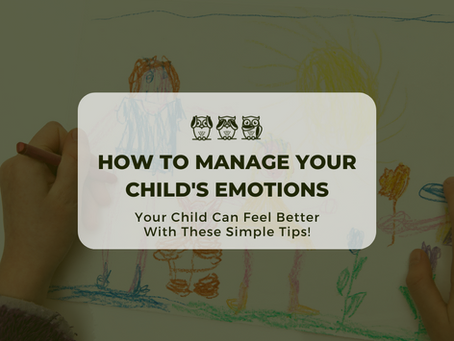
Your Child Can Feel Better With These Simple Tips!
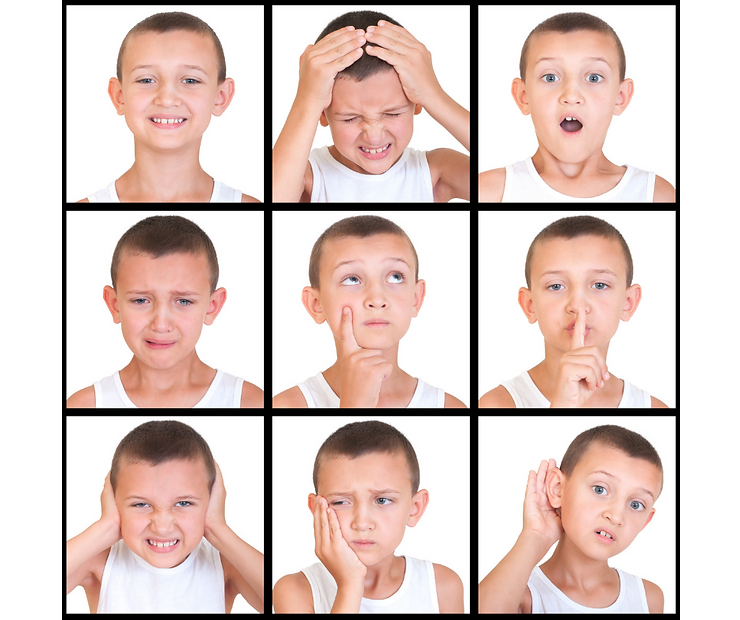
1. Set up a Routine: Make sure backpack, clothes & homework are ready the night before. Have a family meal time or family fun time each day. Let your child know the plans for the next day.
2. Stay Calm: Even if your child is begging you, crying & melting down. Your child can sense your anxiety. Put on your “Game Face” and remain positive. Focus on your child’s strengths instead of their weaknesses. Help them follow through with their obligations whether it is with a playdate, school, church, or home.
3. Do NOT avoid your child’s fears: Help your child face their fears. Avoiding the “thing” that causes your child’s fear will only make it worse! Letting your child stay home from school because they don’t want to be away from you will only make it harder the next time. There may be tears, tantrums & sad faces but know that with time then that will go away. The best way to conquer anxiety is to face anxiety!
4. Be Prepared: Making sure that your child’s homework is done, tests are studied for & materials ready will help ease their anxiety. Many times, students are not wanting to come to school because their homework is not done & missing more school will only increase that worry adding upon their stress. Whatever your child’s fear is, you can help them feel more prepared and confident.
5. Teach your child strategies: Children can be taught strategies at a young age to help deal with their anxiety. They will need your help & guidance on how to use these strategies because children won’t know how or when to use them on their own. Strategies include deep breathing, fidget or sensory toys, positive self-talk, & relaxation or mindfulness methods.
6. Cut down Screen Time: Studies show that our screen time increases anxiety and depression and decreases social skills. Your child should have a maximum of 45-60 min of screen time a day (This does not include screen time for school or homework)! Use technology as a tool rather than a distraction. Encourage them to go outside and play.
7. Good Sleep: Make sure that your child is getting enough sleep at night. A good bedtime for elementary students is 8:30. This allows them to at least get 10-12 hours of sleep. Make sure they are not on electronics at least an hour before bedtime. This will help their brains relax and regulate their melatonin levels, which helps them sleep better.
8. Healthy Diet: Our food is our fuel. Studies show junk food increases anxiety and depression. If our children aren’t eating healthy, they won’t be able to function. They will be more restless, anxious & emotional. Healthy food will improve anxiety and depression.
Resources for Anxiety and other Emotions
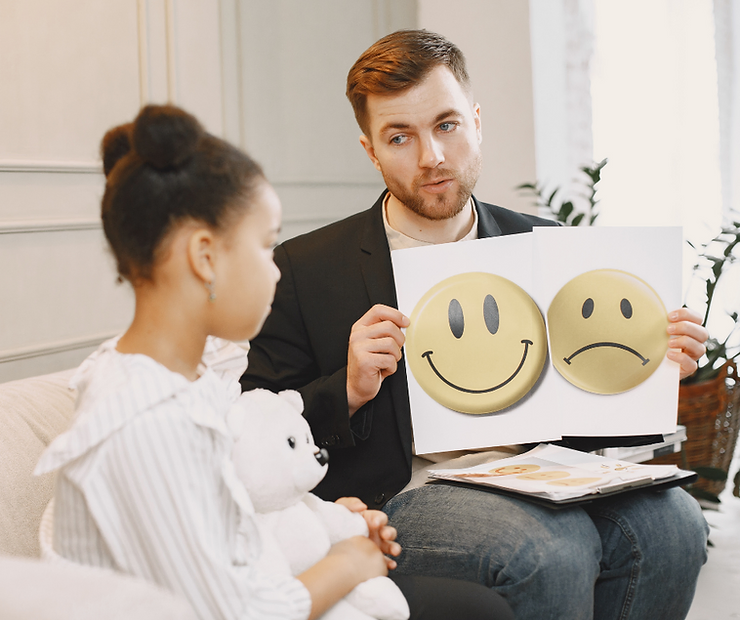
Technique’s
Any Mindfulness technique could be helpful. You can use these or google different ones
Techniques: Any Mindfulness technique could be helpful. You can use these or google different ones
● The Color Game-Find everything in the room that’s a certain color, then go to the next color
● Come back to the 5 senses- example: 5 things you can see, 4 things you can hear, 3 things you can touch, 2 things you can smell, 1 thing you can taste
● Sing your thoughts to the tune of Happy Birthday or say them in a funny voice (Like Minnie Mouse)
● Lock up your worries in a worry box in your mind, then set a worry time to open up the box and talk about your child’s worries
● Take deep breaths with your child In for 4 seconds, out for 4 seconds
● Tell your safety brain “That’s a lie” then tell your brain true information (ex: List the people at school who care about your child if your child is afraid of school)
● Give your child a stress ball or sensory toy to play with while they talk to you
● Imagine every detail of your happy place or memory like you were actually there
Books:
● Workbook to do with your child- What to do When you Worry too Much by Dawn Huebner or What to do When you don’t want to be apart by Kristen Lavallee, What to do When Fear Interferes, What to do when your temper flares, What to do When Mistakes Make you Quake, What to do when you Grumble too Much, What to do when Bad Habits Take Hold, etc (There is a whole series of these books for different emotions you can search What to do workbooks for kids)
● The Illustrated Happiness Trap by Russ Harris-Easy read for adults with some techniques to help the worries
● You can Google “Books to help kids with anxiety (or whatever emotion)” and a long list of helpful books come up
Websites:
● Mind yeti- guided mindfulness for kids https://mindyeti.com/power-portal
● Yogamedo youtube channel- Yoga for kids helps them learn some skills to de-stress
● www.cosmickids.com or Cosmic Kids.com on youtube
● Worry Wise Kids-Info on anxiety for parents www.worrywisekids.org
● NAMI- Info on anxiety https://www.nami.org/
● Google “mindfulness techniques for kids” online
● Youtube relaxing music with fish on youtube- Have your child focus on the fish when upset
Free Apps:
● Relaxio (White noise app)
● Stop, Breathe, and Think (guided mindfulness app based on your mood)
● Headspace (General guided mindfulness/meditation app)
● Mind yeti app (Goes along with the website mentioned above)
● Mindful Family
● Insight Timer
● Smiling mind
● My Strength- free classes, tips, and trackers for mental and physical well-being
● SafeUT- 24/7 therapists you can call, text, or chat with- you can also send in tips of someone who may need help
Community Resources:
● SAFE-FAM- Free Mobile Response and Stabilization services for any child or caregiver ○ 1(833) SAFE-FAM (723-3326)- They come into your home and work with your child for free ● Call 2-1-1 for more resources for children and adults
8 Mindfulness Activities You Can Do as a Family

Mindfulness is a simple, yet powerful way to relieve stress and help with emotional regulation, and there are so many benefits for children and adults. You can practice mindfulness regularly (even if you are feeling good) to enhance the wellbeing of your family. Here are ten simple tricks you can try with your family (You can think of some of your own too!):
1. Take a listening walk Go someplace (backyard, nature, the mall, etc) and walk together in silence, listening for sounds you typically overlook: leaves rustling, a pine cone falling from a tree, your own steady breath. To make it more fun, you can turn paper cups into amplifiers by cutting a hole in the sides of two cups and putting them over your ears.
2. Take a 30 second vacation Imagine every detail of where you want to go on vacation (can also be your happy place or a happy memory) as if you were actually there in your mind. What can you see, taste, touch, and smell while you are there? You can do this as long as you would like.
3. Savor some silence During a period of enforced quiet, go through your regular routine, and see what you hear, see, smell, and feel in the silence.
4. Try a sitting meditation A formal meditation can be difficult for kids (and adults!). But it is very effective— The most common form of meditation is to focus on the breath. You can have your family focus on their breathing, or find a guided meditation on an app or website (Stop, Breathe, and Think, Mind Yeti, Insight Timer, Headspace, Smiling Mind, and Mindful Family are a few.)
5. Play the Color Game While you are walking outside or sitting inside, you can play the color game with your children. Find everything in the area that is a certain color, then you can go to the next color. You can also play this game with patterns (stripes, polka dots, lines, etc) numbers, letters, and shapes. This game helps calm the mind and bring us back to the present.
6. Really taste what you’re eating Be in the present moment with the taste, textures, and temperature of foods that you are eating. Focus on how it feels to chew or sip in your mouth. Ask everyone to spend the first few minutes of certain meals silently noticing the food in their mouth. If your mind wanders to something else, simply bring it back to the present moment.
7. Listen Carefully/Spend Time Together Without distractions like TV, social media, phones, or electronics, be fully engaged as you listen to each other and spend time with each other. Notice how you feel about each other when you do this.
8. Notice your body A “body scan” is a great way to notice how your body feels in the present moment. Sit or lie with your kids and, starting with the toes, silently or out loud bring awareness to one body part, until you’ve worked your way up to the top of your head. If you want, you can have each person describe how a specific body part feels (ex: “I’m focused on my stomach, and it feels rumbly,” or “I’m focused on my left toes, and they feel tingly.”)
11 Tips to Parent Your Anxious Child by Anne Marie Albano, PhD

1. Respect and validate your child’s feelings. Anxiety is real and not pleasant.
2. Teach your child deep, slow breathing. This is an easy and very portable skill for self-soothing and calming.
3. Listen to your child and ask, “Tell me what you are thinking.” This will help to reveal scary thoughts and scenes that build up in your child’s mind.
4. Rather than swooping to reassure, ask your child, “How likely is (that thing you are afraid of) to happen?” You’ll be teaching them to challenge their anxious thinking.
5. Prompt your child with “Tell me some things you can do to handle this situation,” and help them to brainstorm rather than just giving them solutions. This will help them feel empowered.
6. Give up the idea of “mental health days,”“skip days,”“sleep with mom nights,” or other ways of avoiding feared situations. This just makes the anxiety stick more firmly and lead to further avoidance.
7. Encourage your child’s attempts to be brave, no matter how small they may seem to you. Use labeled praise such as “I’m so proud of you for sleeping in your own bed last night.”
8. Work with your child to outline small steps leading to a bigger goal.
9. Create opportunities for your child to practice being brave and coping, and then high-five their efforts.
10. Recognize when you are anxious and say aloud what you can do to calm down and solve the situation. You’ll be modeling coping for your child, but be mindful and don’t overshare your anxiety!
11. Use a feelings chart to talk about how you feel, and model it for your children, “I feel sad because I burnt dinner.”



